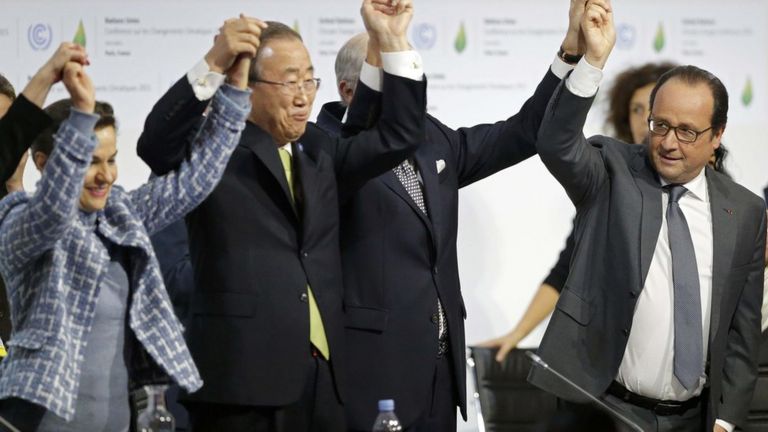To start with, I want to continue on fro my last blog post, is COP21 really going to help the cryosphere? For those that are unsure of what COP21 aimed to achieve, check my previous blogs OR you can watch this simple video of the overview of COP21.
Obviously, attempting to come to a global binding agreement with nearly 200 nations, with lets be honest, some people who really don't like each other is difficult by any means, but the overall outcome is that it appears we have taken a step in the right direction in reducing greenhouse gas emissions in aim or reducing global warming to 2 degrees Celsius.
However, will COP21 really help in saving the remaining ice on this planet? In my opinion, I simply feel its too little too late for the alpine glaciers and Arctic sea ice due to their volatility to slight increases in temperature. It was only in early 2000's that no Swiss glaciers were recorded to be advancing and only 5% of glaciers in Italy were growing. Even a 2 degree increase in global temperatures has been proposed to impact higher altitudes greater than previously expected. From my dissertation research in Switzerland, it was clear that glaciers are extremely sensitive to any warming as increased melt water increases the rate of glacial ablation. Because of this, I believe that COP21 will not help alpine glaciers as the warming is still going to occur. If we want to save the worlds alpine glaciers, warming needs to stop sooner rather than later.
The Arctic sea in my opinion faces the same fate. Arctic sea ice has undergone dramatic changes in recent year, including thinning of the ice pack, reduction in ice area coverage, and record minimum September ice cover. It is suggested by Holland et al. (2006) and Lindsay and Zhang, (2005) that we have reached a "tipping point" where positive feedback's lead to a continuous reduction in Arctic sea ice extent. Even if we managed to miraculously reduce warming to the 2 degree level, the Arctic Ice will still retreat until eventually gone due to these positive feedback loops including albedo.
So with it clear that Alpine and Arctic sea ice is still likely to disappear over the next century, warming reductions cannot save these ice masses, and the melting world just worsens with each passing day.

